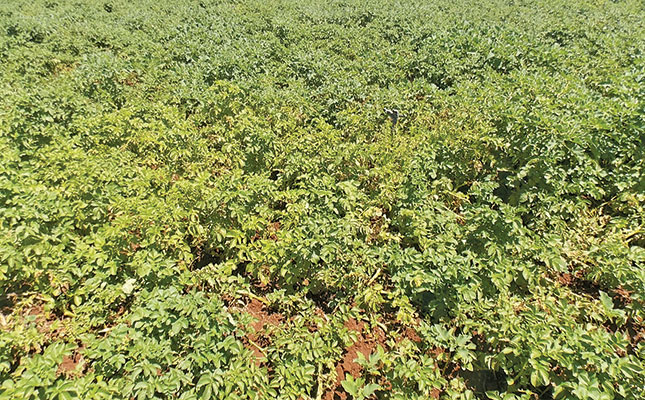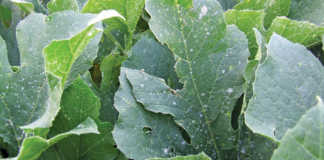
Photo: FW Archive
Photosynthesis is the process by which light energy is absorbed by plants and stored as starches and sugars. It’s essential for normal plant growth. The chemical behind photosynthesis is chorophyll. A crucial component of cholorophyll is the element nitrogen.
READ: Inoculating legume crops
Why nitrogen
The leaves of plants that receive enough nitrogen have a dark, blue-green colour. Where nitrogen is lacking, the leaves have a pale-green colour and could even be yellow in extreme cases. Plant growth is suppressed because of insufficient photosynthesis.
In the case of maize and grain sorghum, a V-shaped pattern on the leaf tips is a sign of nitrogen deficiency. The leaf edges die off, inhibiting plant growth. Nitrogen is found in the soil and atmosphere. Legumes work with bacteria to ‘fix’ (trap) nitrogen and make it available to the plant.
Nitrogen can also be provided to the plant as a fertiliser. Examples are:
- LAN (28): limestone ammonium nitrate;
- ASN (27): ammonium sulphate nitrate;
- Urea (46);
- Ammonium sulphate (21);UAN (32): urea ammonium nitrate;
- ANS (19) and (21): ammonium nitrate solution.
(The figure in brackets is the percentage of nitrogen.)
Nitrogen can also be mixed or blended with phosphate (P) and potassium (K) in various ratios to meet the plants’ nutrient requirements. Examples include:
4.3.4 (33) + 0,5 % Zinc (Zn): 12% N, 9% P, 12% K + 0,5% Zn.
3.2.1 (25) + 0,5 % Zn: 12,5% N, 8,3% P, 4,2% K + 0,5% Zn.
2.3.2 (22) + 0,5 % Zn: 6,3% N, 9,4% P, 6,3 %K + 0,5 % Zn.
2.3.4 (30) + 0,5 % Zn: 6,7% N, 10% P, 13,3% K + 0,5 % Zn.
Application
Nitrogen is usually applied to summer crops in two instalments:
At planting – Nitrogen, mixed with phosphorus and potassium, is band-placed in the plant row about 5cm below the seed and 5cm away from the seed.
After plant emergence – Depending on the crop species, nitrogen is applied as a top dressing.
Acidifying effect
A nitrogen fertiliser that contains large quantities of ammonium and amine nitrogen has a greater acidifying effect on soil than a nitrate-containing fertiliser.
LAN (28), for example, has the lowest acidifying effect due to its nitrate content and the 20% lime it contains.
Ammonium sulphate contains only ammonium nitrogen and sulphur, which accelerates soil acidification. It is generally used on an irrigated crop where the pH is high and the acidifying aspect therefore has a neutralising effect.
The table shows the classification of nitrogen carriers from the most to the least acidifying source.

Directorate Agricultural Information Services, DAFF, in co-operation with the Fertiliser Society of SA.
This article was originally published in the 5 February 2016 issue of Farmers Weekly.













